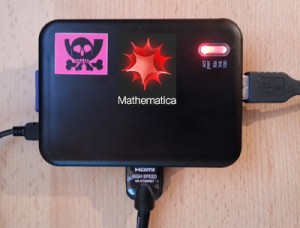January 8, 2014 – It’s my birthday today and having reached the 65th anniversary of my life I am in a somewhat reflective mood. The flood that inundated our ground floor of the apartment has resulted in a chaotic mess with parts of our floor pulled up and heaters with fans deployed to dry out the base of the walls and the underlying material upon which the floor was laid. All in all this is not conducive to writing about science and technology….but more about figuring out how to cope temporarily with a less than writing-conducive environment.
But nevertheless the show must go on. So today a quick note on an announcement made by Stephen Wolfram at the Consumer Electronics Show in Las Vegas. He, a man who I greatly admire, is the mover and shaker behind the computational search engine, Wolfram|Alpha, is kicking off the Wolfram Connected Devices Project.
The project is focused on collecting information initially on more than 2,000 connected devices to develop a complete language for the Internet of Things. This is an open project with a goal to use the Wolfram-derived programming language for embedding into devices from wearable watches to GPS devices, to smart meters, to robots. If successful almost any Internet-enabled device will share a common way to communicate.
The Wolfram Language is a derivation of Mathematica, a symbolic programming tool with enhanced pattern matching. Today the language can be found in applications developed for education, science, engineering and finance. It is also the language used by a do-it-yourself computer kit, Kano and Raspberry Pi, which I recently wrote about on this blog (see picture below). And in attempting to become the common language currency of two-way communication for devices connected to the Internet it should contribute dramatically to an enhanced Internet of Things.













